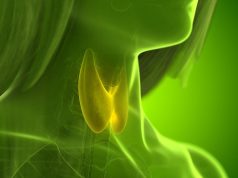Increased levels of PM10, PM2.5 tied to higher levels of severity, with exposure-response relationship
TUESDAY, Feb. 4, 2020 (HealthDay News) — Patients with rhinitis who live in high-pollution areas are more likely to report severe nasal symptoms, according to a study published online Jan. 23 in the Journal of Allergy and Clinical Immunology.
Using data collected for 1,408 patients with rhinitis from two multicenter European cohorts, Emilie Burte, Ph.D., from the Barcelona Institute for Global Health in Spain, and colleagues examined the association between annual pollution exposure (reported as nitrogen dioxide [NO2] level and levels of airborne particles of diameter ≤2.5 µm [PM2.5] and ≤10 µm [PM10]) and the severity of rhinitis.
The investigators found that higher levels of exposure to both PM10 and PM2.5 were associated with a greater risk for increased severity of rhinitis. For each 10-µg/m³ increase in PM10, the adjusted odds ratios for mild, moderate, and high rhinitis severity were 1.20 (95 percent confidence interval [CI], 0.88 to 1.64), 1.53 (95 percent CI, 1.07 to 2.19), and 1.72 (95 percent CI, 1.23 to 2.41), respectively. For higher levels of exposure to PM2.5, the results were similar. The researchers reported that exposure to NO2 was also associated with increased symptom severity, but an exposure-response relationship was not found.
“This study contributes to our understanding of rhinitis, a disease which, although not fatal, represents a major public health challenge and is associated with a negative impact on the quality of the daily lives of those affected and a very high burden on public funds owing to the treatments prescribed, decreased productivity, and absenteeism,” a coauthor said in a statement.
One author disclosed financial ties to pharmaceutical companies.
Copyright © 2020 HealthDay. All rights reserved.








